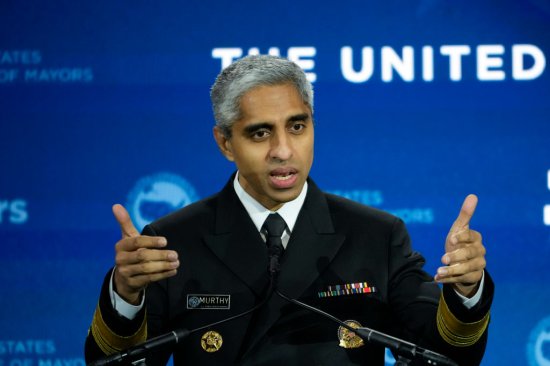
For decades, cigarette manufacturers have been mandated to place a similar warning label on packaging.
U.S. Surgeon General Vivek Murthy called upon Congress on Monday to issue a warning label for visitors to social media platforms to combat what he called an “emergency” mental health crisis amongst youth.
“It is time to require a surgeon general’s warning label on social media platforms, stating that social media is associated with significant mental health harms for adolescents,” he wrote in an op-ed for the New York Times.
Murthy is calling for a periodic notification that reminds users of the risks. “A surgeon general’s warning label, which requires congressional action, would regularly remind parents and adolescents that social media has not been proved safe,” he wrote.
[time-brightcove not-tgx=”true”]For decades, cigarette manufacturers have been mandated to place a similar warning label on packaging, cautioning users of the health risks. The warning was unprecedented when it was implemented in 1965 via Congressional action, after then Surgeon General Luther L. Terry released a report the year before outlining the links between smoking and lung cancer.
Murthy believes that a similar warning could change behaviors around social media, and noted that tobacco studies show that warning labels can increase awareness and change behavior.
He says that some parents believe a similar warning might change how they let their children interact with social media. “When asked if a warning from the surgeon general would prompt them to limit or monitor their children’s social media use, 76 percent of people in one recent survey of Latino parents said yes,” he wrote.
But a label alone won’t make social media safer. The American Psychological Association says teenagers spend nearly five hours every day on platforms like YouTube, TikTok and Instagram. The mental health impacts are hard to ignore: a 2019 APA study found that the proportion of young adults with suicidal thoughts or other suicide-related outcomes increased 47% from 2008 to 2017, just as social media use began to climb.
The more time an adolescent spends online, the greater the impact on their mental health, said Murthy. “Adolescents who spend more than three hours a day on social media face double the risk of anxiety and depression symptoms, and the average daily use in this age group, as of the summer of 2023, was 4.8 hours,” he wrote. “Additionally, nearly half of adolescents say social media makes them feel worse about their bodies.”
Last year, Murthy released a public health advisory on social media’s mental health impacts that detailed specific recommendations for policymakers, platforms and the public to make social media safer for kids.
He recommended that Congress enact legislation that requires platforms to protect kids from viewing harmful content online and refrain from collecting sensitive data from children, and also called for social media companies to allow for independent safety audits. He recommended that schools and parents work to create phone-free environments.
“We have the expertise, resources and tools to make social media safe for our kids,” he wrote. “Now is the time to summon the will to act. Our children’s well-being is at stake.”